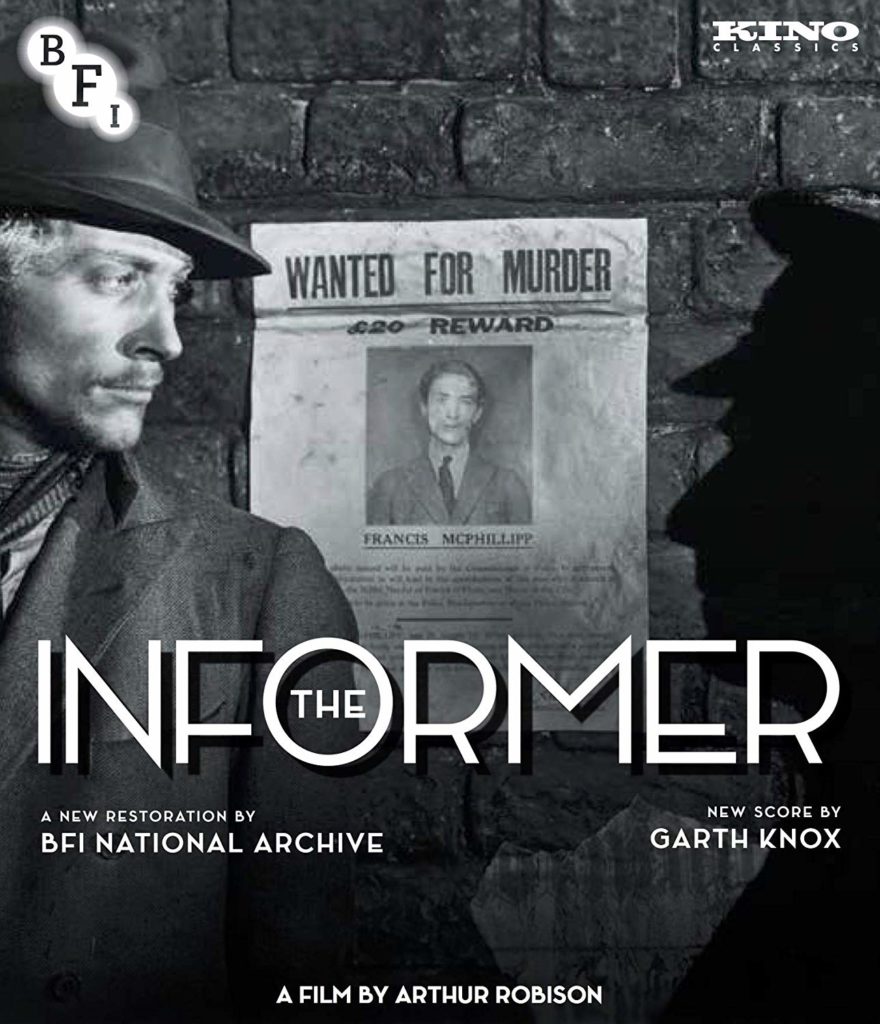Silence, Sound, and Fury
DIRECTED BY ARTHUR ROBISON
STREET DATE: April 23, 2019/KINO LORBER

Set in Dublin in the early independent Ireland of 1922, this film is the first adaptation of Liam O’Flaherty’s novel (which John Ford would adapt for the screen in 1935). Francis, a revolutionary, kills the chief of police and his fellow revolutionaries caution him not to return to the city. Gypo, his best friend, takes up with Francis’ girlfriend, Katie. When Francis returns and says goodbye to Katie, Gypo sees her sneak Francis out of her apartment and flies into a jealous rage—albeit a slow-boil one. Francis goes to the cops and tells them that Francis is at his mother’s house and is paid for the information. The other revolutionaries find out that Gypo turned on Francis and they seek revenge.
Revenge, retribution, and regret: each of these flavor the film in turn. Lars Hanson as Gypo and Lya De Putti as Katie are stunning and nuanced. In the part-talkie version, released as an extra on the Kino disc, both had to have their lines dubbed as neither were native English speakers. The dialogue sequences are clunky, per the custom at the time. The main feature version, which includes tinting design according to the the original print, contains none of these sequences and instead features very smooth editing and pacing.
The sound version features many scenes recorded in the same way as the silent version—a camera walking up the stairs ahead of a group, interesting shots of Katie in the bedroom talking with the leader of the party when he discovers that Gypo is not at Katie’s house any longer…these are achieved by simply dubbing dialogue over the scene. The synchronization isn’t perfect, but it’s preferable to a stationary camera and is, I think, an asset to the sound version.

Image from DVDBeaver.com.
The sets are wonderfully designed, feeling gritty enough for a film noir. The costumes are appropriately worn and are not overwrought. The police uniforms are snappy but without a “fresh from wardrobe” look…they actually look as if policemen had been wearing them for a little while. Francis’ mother’s house has every doily and lamp one might imagine for that era and when she brings out the tea set in the first third of the film, you believe there’s actually tea ready to be served. The lighting makes a fabulous use of light and shadow. It’s just as beautiful as any film noir I’ve seen.
The score on the silent version, composed and performed by Garth Knox, is an excellent exploration of the setting and emotion. A traditional movietone score is included with the part-talkie version which is excellent in itself. Knox’s score gives the action a bit more space to do the talking, as more modern scoring practice often does.
If you love films set in historical timeframes, especially Irish dramas, you will enjoy this. Lars Hanson and Lya De Putti deserve to be better-known names in silent film and I’m grateful that this Blu-ray has been issued and that the BFI undertook this restoration to begin with. Fans of Fritz Lang will recognize Craighall Sherry, one of the revolutionaries, as the spies’ boss from Spies.

